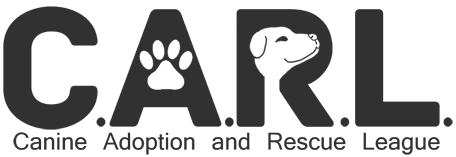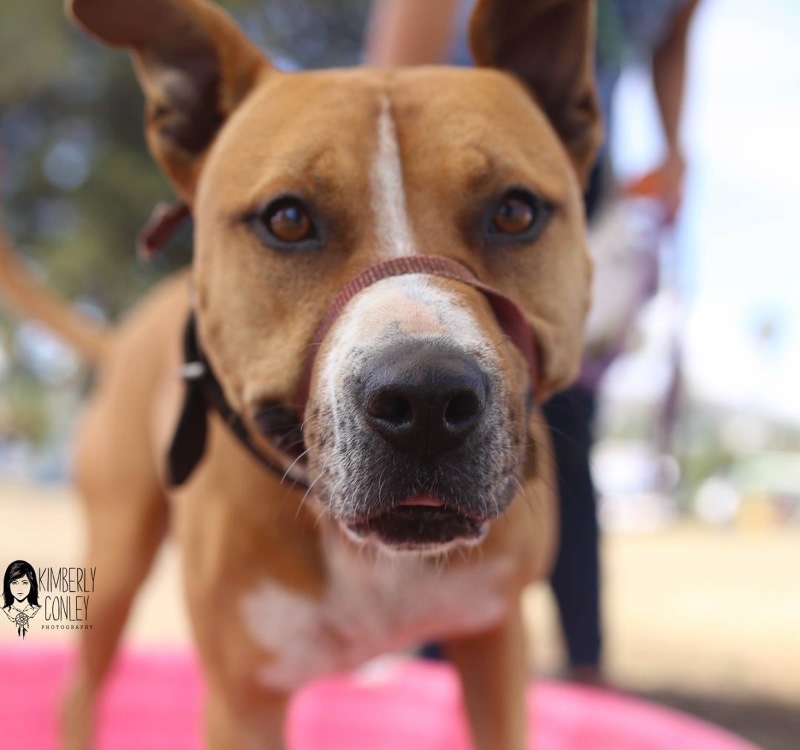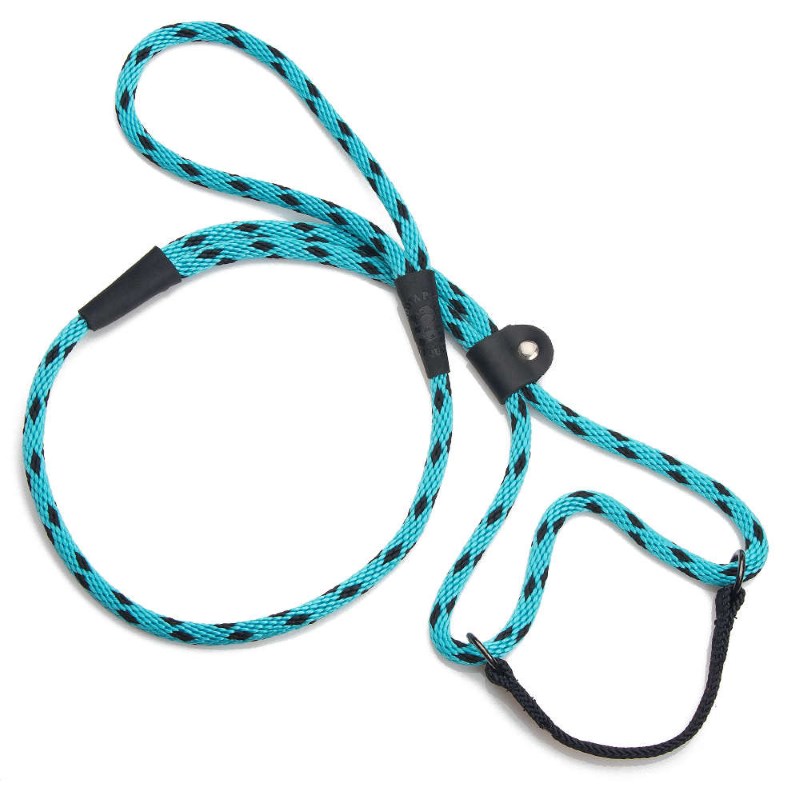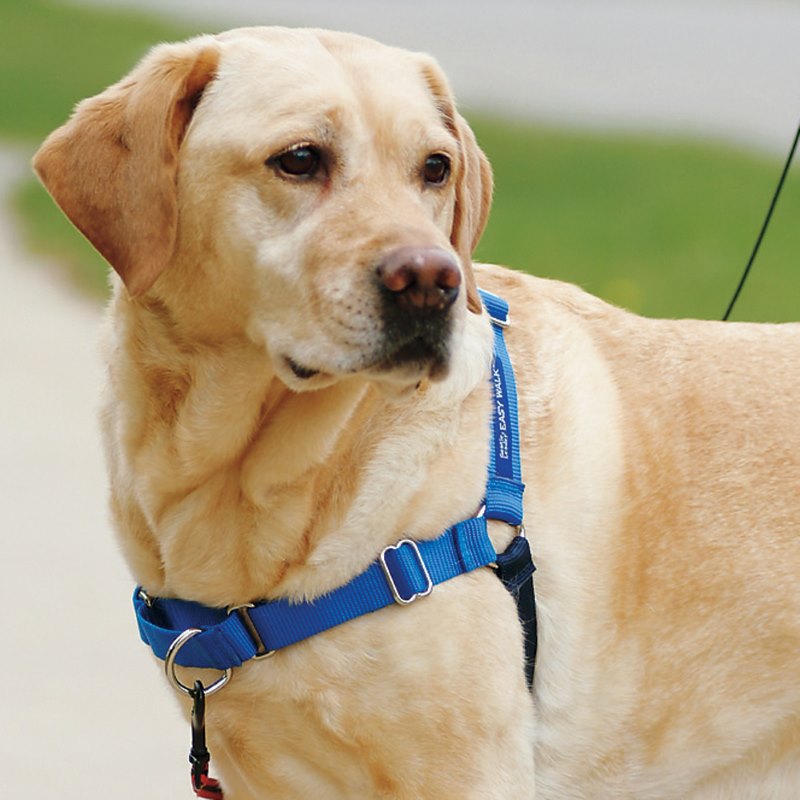The Best Leashes for Big Dogs
- 2017-02-16
- By Daniel Elliot
- Posted in Pet Safety
This article is part of “Adopt Your Love-a-Bull Valentine”, a joint digital event by CARL and SPARC. Be sure to check out all the pit bulls and other big dogs available from CARL! Adoption fees for pit bulls and dogs 40 lbs or heavier are $25 off through February 28, 2017!
By: Lucy Mrvichin
If your pooch turns into a sled dog when you clip his leash on, or your daily walk feels more like a game of tug-of-war, you aren’t alone! Leashes create an unnatural boundary for dogs, which can increase stress and reactivity, and the force exerted on their necks can lead to trachea damage and other health concerns.
Interestingly, even though they are causing pain and sometimes damage to themselves, dogs are constantly reinforced for pulling on the leash by getting to walk faster, smell new smells, or maybe chase the neighbor’s cat — way more fun than just walking politely! Let’s explore some of the good, the bad, and the ugly dog walking options to help you and your dog have the best walk possible!
Worst Options
Choke Chains
These metal collars are one of the most harmful tools you can use to walk your dog. Their design creates a fully tightening collar whose purpose is to deliver a sharp correction to your dog, take away his air (how they got their name), or startle him with a loud sound.
In a study of 50 dogs using choke chains, 48 of them had trachea damage from these collars. If you do use a choke chain, it should NEVER be left on your dog when he is unattended because they are designed to fully tighten and can kill your dog if he gets caught on an object and then can’t get away.
Pinch Collars/Prong Collars

This is a prong collar. Please don’t use it!
If you have seen these collars, you know they look pretty bad, but they are actually safer for your dog than the choke chain.
In the same study that was mentioned above, only 2 of 50 dogs using these collars suffered trachea damage. Dogs don’t pull as hard on them, and they are designed to only tighten a limited amount.
These collars come with a whole new set of dangers for your dog, though, and most positive trainers do not recommend using them since they work by inflicting pain, and can worsen fear-based behavior problems.
Let’s pretend Fido is scared of other dogs and lunges at them when he sees them on a walk. His owner wants to train him to stop doing this, and tugs on the leash, causing pain every time Fido lunges forward at another dog.
Eventually, Fido will stop lunging because he wants to avoid the pain, but now he associates other dogs, something he was already scared of, with pain. This makes socialization much harder since the negative association has already been formed.
These collars can increase dog aggression, as well as fear and insecurity. They should also never be left on an unattended dog, especially a puppy that is still growing since the prongs can puncture the dog’s skin and cause major injury.
Better Option
Limited Slip/Martingale Collars
Recommended brand: Mendota
Some dogs are really good at slipping out of their collars, especially when their heads are smaller than their necks, and you need something to keep them safely on the leash. If your dog isn’t a big puller, a martingale collar may be exactly what you need!
These collars are limited slip collars and tighten just enough to prevent your dog from backing out of the collar, but not all the way like the choke chains. A limited slip or martingale collar will probably not decrease your dog’s pulling drive, and can cause trachea damage as well in heavy pullers, but the larger fabric strap puts less concentrated force on your dog’s neck.
Like the collars mentioned before, these collars cannot be left on an unattended dog since there is still a choking hazard.
Best Options
For the extreme pullers, it really isn’t safe to put anything around their necks if you want to avoid causing damage and discomfort. The below options provide gentle and effective control of even the most powerful pups.
Head Collars
Recommended brands: PetSafe Gentle Leader, Company of Animals Halti
Horse owners probably best understand the need to control a powerful animal who is much bigger and stronger than themselves, and the Gentle Leader has given that power to dog owners. These are innovative walking tools that when used correctly offer a large amount of control with no pain or injury to the dog.
Instead of fitting around the dog’s neck, it is worn high and tight behind the dog’s ears with a loop that goes over their nose. They do not offer a sharp correction like the choke chain and the dog walker just needs to pull gently backward and can steer the dog’s head with minimal effort, making it next to impossible for the dog to continue forward, because where the nose goes, the body follows.
Most dogs acclimate to this product with a few short training sessions, however they should only be used for walking or training and should never be left on an unattended dog.
Front Clip Harness
Recommended brands: PetSafe Easy Walk, Softouch Sensation, Freedom
Dog owners make a huge mistake when they try to stop their dogs from pulling by putting a harness on them. Even though they take the pressure off the throat, harnesses change your dog’s center of gravity and make it much more comfortable for him to pull you down the road.
Traditional harnesses have been reimagined, and now one of my favorite tools to use on dogs who pull is the front clip harness (look for Easy Walk, Sensation or Freedom harnesses). Unlike a traditional harness, these have the leash attachment in front of the dog’s chest instead of behind the shoulders.
These tools are fairly easy to put on, will not cause damage to your dog’s throat, and do not rely on pain to change your dog’s behavior—dogs just find it less comfortable to pull. If you already have a harness and you want to see how these tools can help, clip your leash to the front ring (if there is one) and see how it works!
For more information on these tools, talk to a trainer or your local pet supply store. They may be your new best friend to walk your best friend!
Opinions expressed are those of the author and do not necessarily reflect those of Canine Adoption and Rescue League.
Recent Posts
- Thank You Briggs School
- Thank You Donna Avery!
- A sibling affair: twins earn top scouting awards together
- CARL Helps Dogs from Israel
- Thank You SPHS Cardinal Football Team
Recent Comments
- Kelli on In Loving Memory of Yoda
- Genie Tuttle on When a Walk Won’t Do
- Jan Jackson on CARL Rescues 11 Dogs from Yulin Dog Meat Festival
- Letty on CARL Rescues 11 Dogs from Yulin Dog Meat Festival
- Grace Cunningham on Lowe’s HEROES Improving Our Communities
Archives
- February 2024
- October 2019
- July 2019
- June 2019
- January 2019
- September 2018
- March 2018
- May 2017
- March 2017
- February 2017
- November 2016
- October 2016
- September 2016
- July 2016
- June 2016
- May 2016
- March 2016
- February 2016
- January 2016
- December 2015
- October 2015
- September 2015
- July 2015
- June 2015
- May 2015
- March 2015
- February 2015
- January 2015
- December 2014
- November 2014
- October 2014
- September 2014
- August 2014
- July 2014
- June 2014
- May 2014
- April 2014
- March 2014
- February 2014
- January 2014
- December 2013
- October 2013
- August 2013
- July 2013
- April 2013
Categories
- Canine Health and Diet
- Donate
- Donations
- Event
- Foster
- Fundraising
- Humane Education
- Media
- Pet Safety
- Pooch Parade
- Press Releases
- Rescue Story
- Senior Dogs
- Training
- Volunteer




